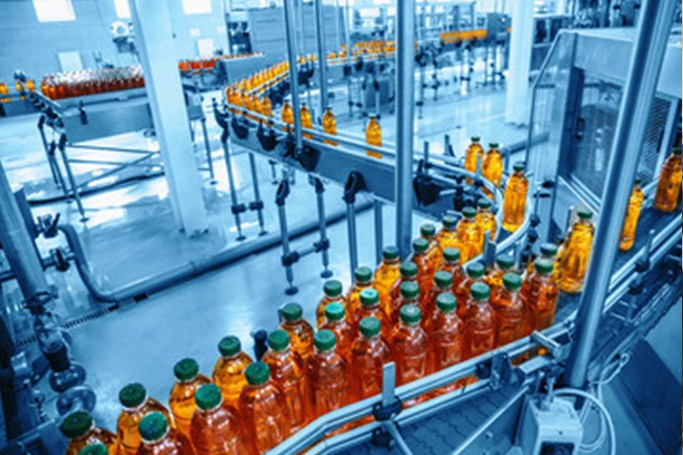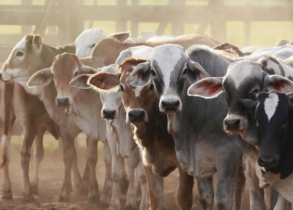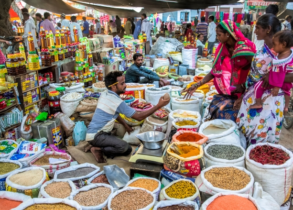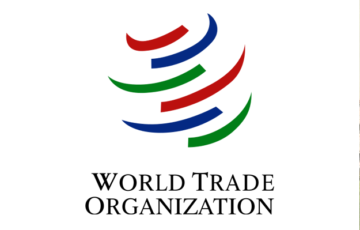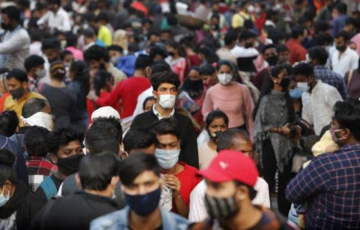FOOD PROCESSING AND RELATED INDUSTRIES IN INDIA
Food Processing
Definition and Importance
Food processing encompasses a series of techniques and methods used to transform raw ingredients into finished food products. This includes preservation methods, the addition of food additives, drying, and other processes aimed at extending the shelf life of food products, improving their quality, and enhancing their nutritional value. A well-developed food processing sector is crucial for doubling farmers’ incomes, reducing waste, increasing the value added to agricultural products, promoting crop diversification, ensuring better returns for farmers, fostering employment, and boosting export earnings.
Role in Achieving Agricultural Goals
The Ashok Dalwai Committee, appointed with the goal of doubling farmers’ incomes by 2022, identified the food processing sector as a key area for development. By increasing the level of processing, the sector can significantly contribute to achieving these objectives, given India’s status as a leading producer of various agricultural commodities including milk, ginger, bananas, and many more.
Status of Food Processing in India
Industry Overview
- The Indian food processing industry is valued at approximately 121 billion dollars, showcasing an average growth rate of over 8% in the past five years.
- Food processing industries have been growing at an average annual rate of 8.3% up to FY21, employing 12.2% of individuals in the registered manufacturing sector as of the ASI 2019-20 survey.
- Processed food exports account for about 10.9% of India’s total exports during the fiscal year 2021-22.
Geographical Distribution
- The food processing industry in India comprises over 35,000 registered units, with a significant number located in coastal states due to the accessibility of marine resources for processing. Key states involved in food processing include Andhra Pradesh, Maharashtra, Karnataka, Kerala, Gujarat, Punjab, and West Bengal, along with significant contributions from non-coastal states such as Uttar Pradesh and Punjab.
Advancing the Value Chain
- The predominance of primary processing indicates the potential for moving up the value chain by focusing more on secondary processing activities. Such a shift could significantly enhance farmer incomes, especially in the horticulture sector, where fruits and vegetables offer substantial opportunities for value addition. Moreover, most of India’s agricultural exports currently consist of raw commodities. There is considerable scope to increase the processing level of these exports to create more value-added products domestically.
Types of Food Processing Food
| Primary
Processing |
The conversion of raw agricultural produce, milk, meat, and fish into a commodity fit for human consumption is referred to as primary processing. It involves steps such as cleaning, grading, sorting, packing etc. |
| Secondary
Processing |
Secondary processing entails modifying the basic product to a stage just prior to final preparation in the consumer’s kitchen, such as tomato puree, ground coffee, and so on. |
| Tertiary
Processing |
It is related to high-value-added ready to- eat products like berry products,
ice cream, instant noodles, sauces, jams etc. |
Significance of Food Processing Industries
Economic and Employment Contribution
- As one of India’s sun-rise industries, the food processing sector is instrumental in linking agriculture with manufacturing, contributing significantly to employment generation and economic growth.
Reducing Food Waste
- By addressing inefficiencies in handling, storage, and logistics, the sector can significantly reduce food wastage, enhancing food security and sustainability.
Value Addition and Consumer Choices
- Food processing adds value to agricultural produce, expands consumer choices, and ensures food availability through various preservation and processing techniques.
Inflation and Trade
- The industry plays a crucial role in curbing food inflation by extending the shelf life of products and boosting trade, thereby earning valuable foreign exchange.
Crop Diversification and Rural Development
- Encouraging crop diversification and fostering rural entrepreneurship, the food processing industry can bridge the rural-urban divide, mitigate migration, and promote socioeconomic development.
Research and Development
- Investing in R&D is essential for innovating new products, processes, and packaging solutions, driving the industry forward.
Infrastructure and Capacity Building
- Supporting infrastructure development and capacity expansion is vital to sustaining the growth of the food processing sector, ensuring that it continues to serve as a future growth engine for India.
Constraints/Issues in the Development of Food Processing Industries
Supply and Demand Side Constraints
- Small and scattered marketable surpluses due to dispersed holdings and low productivity.
- High seasonality and lack of mechanization exacerbate these issues.
Quality and Safety Control Limitations
- The complexity and largely unorganized nature of the food value chain make it difficult to enforce quality and safety standards.
Consumer Awareness
- A significant lack of awareness about nutritional, food safety, and quality issues among consumers.
Informalization
- The unorganized sector comprises about 75% of the market share, leading to inefficiencies.
Infrastructure Bottlenecks
- Inadequate cold chain infrastructure results in over 30% post-harvest loss.
- Insufficient connectivity and all-weather routes compound supply issues.
Low Value-Addition Processing
- Fragmented processing capacity with extensive use of primitive techniques, resulting in minimal value addition.
Low-Value Exports
- Despite being a major agricultural producer, India’s agricultural exports as a percentage of GDP are relatively low.
High Operating Costs and Regulatory Challenges
- The industry faces high working capital requirements, lack of modern equipment, and a fragmented regulatory environment.
Environmental and Health Concerns
- Extensive use of fertilizers and pesticides raises quality concerns, necessitating measures against adulteration.
Logistical and Infrastructure Constraints
- Quality, connectivity, and distribution challenges impact supply-side efficiency.
Skill and Technology Gaps
- A lack of skilled workforce and modern technology in food processing and testing.
High Wastage and Small Business Size
- High post-harvest losses and predominantly small-scale businesses unable to compete with larger entities.
Solutions/Measures for Development
- Human Resource Development: Skill development is crucial, with a need to train 17.8 million people by 2022 as per the NSDC.
- Supportive Policies and Hand-Holding Strategy: Implement risk-sharing mechanisms, financial incentives, and partnerships to develop infrastructure.
- Enhancing Farmer’s Income: Utilize and add value to agricultural products to boost farmers’ income.
- Promoting Research and Development: Foster innovation in product development, processing techniques, and packaging.
- Technological Advancements: Adopt modern technologies for diversified and advanced agricultural practices.
- Waste Reduction: Develop infrastructure for storage, transportation, and processing to minimize wastage.
- Diversification and Employment Creation: Diversify agricultural practices to create new employment opportunities.
- Fostering Village-Level Procurement: Establish local procurement centers for perishables to improve supply chain efficiency.
- Modern Technology and Customized Logistics: Utilize modern technology in training and prioritize customized logistics solutions.
- Public Investment and PPP Models: Increase public investment and promote Public-Private Partnerships for infrastructure development.
- Strengthening Backward Linkages: Enhance connections with farmers, promote contract farming, and ensure quality and price stability.
- Regulatory Framework Improvement: Streamline regulations and foster a supportive framework for contract and corporate farming.
- Developing an Information System: Improve coordination among stakeholders through technology-enabled information and payment systems.
Government’s Initiative to Promote Food Processing Sector
Pradhan Mantri Kisan SAMPADA Yojana (PMKSY)
PMKSY is a comprehensive package aiming to create modern infrastructure with efficient supply chain management from farm gate to retail outlet. It includes several sub-schemes:
- Mega Food Parks: To bring together farmers, processors, and retailers and to ensure maximizing value addition.
- Operation Greens: Initially focused on tomatoes, onions, and potatoes (TOP), it now covers all fruits and vegetables (TOTAL), aiming to stabilize prices and ensure availability.
- Integrated Cold Chain and Value Addition Infrastructure: Enhancing the infrastructure for seamless cold chain facilities.
- Infrastructure for Agro-processing Clusters: Developing clusters to boost the food processing industry.
- Creation/ Expansion of Food Processing/ Preservation Capacities: Encouraging the establishment of new food processing units.
- Food Safety and Quality Assurance Infrastructure: Strengthening the food safety and quality assurance mechanisms.
- Creation of Backward and Forward Linkages: Improving supply chain efficiencies.
- Human Resources and Institutions: Building capacity and promoting entrepreneurship.
Foreign Direct Investment (FDI) Policy
To attract foreign investment, the government has allowed 100% FDI through the automatic route for manufacturing food products and under government approval for retail trading, including e-commerce, of food products produced in India. This policy has brought in USD 3.54 billion over five years ending 2021-22.
Ministry and Departments
- The Ministry of Food Processing Industries (MOFPI): Acts as the nodal authority for the food processing industry, formulating policies and strategies.
- The Department of Animal Husbandry, Dairying, and Fisheries: Focuses on livestock and fisheries’ production, preservation, and disease protection.
- National Institute of Food Technology Entrepreneurship and Management (NIFTEM): A deemed university under MOFPI, offering education and research in food technology and management.
National Mission on Food Processing (NMFP)
- Launched in the Union Budget 2012–13, NMFP aims to decentralize the implementation of food processing-related schemes for more flexibility and effectiveness at the local level.
From Farm to Factory Gate
- The upgrade of 22,000 rural haats into Gramin Agriculture Markets (GrAMS) signifies a major step towards strengthening the rural agricultural markets.
Food Safety and Standards Authority of India (FSSAI)
- FSSAI sets quality and safety standards for food products through regulations, ensuring the health and safety of consumers.
Atma Nirbhar Bharat Abhiyan: PM-FME Scheme
- Under this scheme, 2 lakh micro food processing units are targeted for benefits through credit-linked subsidies, adopting a One District One Product (ODOP) approach.
Mega Food Parks Scheme
- Aims to connect agricultural production with the market by facilitating value addition and minimizing waste, enhancing farmer income and creating employment.
Scheme for Integrated Cold Chain, Value Addition, and Preservation Infrastructure
- This scheme promotes the establishment of comprehensive cold chain solutions from the farm gate to the consumer.
Draft Blue Economy Policy Framework
- A draft policy framework focusing on sustainable utilization of maritime resources, including food processing from marine sources, to support coastal development.
Scheme for Quality Assurance, Codex, R&D, and Other Promotional Activities
- Aimed at building infrastructure for food testing laboratories, implementing quality management systems, and supporting R&D for innovative products and processes.
Pink Revolution in India
Introduction to Pink Revolution
- The Pink Revolution signifies a period of significant technological advancement within India’s poultry and meat processing industry, along with notable developments in onion production and pharmaceuticals. Durgesh Patel is celebrated as the Father of the Pink Revolution, which marked a transformative era focusing on modernizing and enhancing the production efficiency in these sectors.
Focus Areas of the Pink Revolution
Poultry and Meat Processing
- The Pink Revolution brought modernization to the forefront of India’s poultry and meat sectors through specialization and mechanization of processes. This move towards industrialization and the adoption of new technologies aimed to meet international standards and increase productivity.
Onion Production
- Onion production, being a crucial component of the agricultural sector, also received attention during the Pink Revolution, focusing on improving yield and storage technologies.
Pharmaceuticals
- The pharmaceutical sector under the Pink Revolution saw advancements in mass production technologies and quality standards, contributing to the industry’s growth and competitiveness.
Potential for Growth
- India, with its vast population of poultry and cattle, is positioned for significant growth within these sectors. The modernization efforts are geared towards enhancing productivity and meeting the growing domestic and international demand for meat products.
Challenges Facing the Pink Revolution
- Global Market Share: Despite being the largest producer of livestock, India holds only about 2% of the global market share.
- Quality and Safety Standards: Standardization of quality and safety remains a significant challenge for the meat and poultry industry.
- Cold Storage Facilities: The development of cold storage facilities is essential for the sector’s growth.
- Hygienic Practices: There’s a need for increased investment in hygienic practices for meat and poultry processing.
- Regulatory Framework: Implementing standard laws and regulations for production and export is crucial.
Government Initiatives
The Indian government has undertaken various initiatives to support the Pink Revolution, including:
- Exemptions from central excises and income taxes for the industry.
- Transportation subsidies and no restrictions on the export of poultry products.
- Removal of restrictions on Foreign Direct Investment (FDI) to allow 100% FDI in the industry.
- A comprehensive strategy for the modernization of abattoirs to meet quality standards and reduce waste.
National Food Processing Policy (2021)
- The National Food Processing Policy (2021) and NITI Aayog’s recommendations in “The Strategy for New India @ 75” on food processing industries highlight a comprehensive approach towards revamping India’s agricultural and food processing sector. These initiatives aim to create a more efficient, sustainable, and globally competitive agricultural landscape in India.
National Food Processing Policy (2021) Objectives Promoting Farmer Profitability and Industry Expansion
- The core aim of the policy is to enhance the profitability of farmers and foster the growth of the food processing industry. This involves implementing strategies that encourage states and Union Territories to adopt measures that align with these goals.
Reduction of Wastage and Value Addition
- A significant objective is to decrease food wastage at various stages of the supply chain, increase value addition to agricultural products, and ensure fair prices for farmers. This also involves making quality food products accessible and affordable to consumers.
Addressing Nutritional Challenges
- The policy targets the issues of malnutrition and malnourishment by facilitating the availability of nutritionally rich foods, thereby improving the health standards of the population.
Enhancing Competitiveness through Infrastructure and Technology
- There’s a focus on making the food processing sector more competitive and future-ready by building adequate infrastructure, incorporating modern technology, promoting traceability, ensuring food safety, and encouraging the efficient use of resources.
Positioning India as an Investment Hub
- The policy aims to establish India as a leading destination for investments in agribusiness and food processing, thereby driving growth in this sector.
Employment Generation
- It seeks to create employment opportunities by stimulating the development of the agribusiness and food processing industry.
Supply Chain Management (SCM)
- Supply Chain Management (SCM) encompasses the intricate network of all the parties involved in the production and delivery of products from origin to consumer. It involves the management of both tangible goods and information across the entire supply chain, from raw materials to final products.
Components of SCM
- Plantation & Raw Material Acquisition: The initial stage involves sourcing raw materials, such as agricultural products from plantations.
- Cutting & Initial Processing: Raw materials undergo preliminary processing, often at or near the source.
- Transport: The movement of goods from their origin to processing facilities or markets, which can involve various modes of transportation.
- Industry Processing: Further processing of goods to transform them into final products.
- Marketing & Commercialization: Strategies to promote products and reach consumers.
- Customer Delivery: The final step involves delivering the product to the consumer, which can be direct or through various distribution channels.
Role of Supermarkets in Supply Chain
Efficiency and Diversity
- Faster Movement of Goods: Supermarkets enable quicker distribution of products compared to traditional methods.
- Variety of Products: They offer a wide range of products, catering to diverse consumer needs.
Direct Producer Engagement
- Bypassing Middlemen: Direct partnerships with producers eliminate the need for intermediaries, potentially offering better prices for both farmers and consumers.
Recommendations for Enhancing SCM Strategic and Operational Improvements
- Regulate Demand-Supply: Adopt effective strategies to manage fluctuations in demand and supply.
- Logistic Enhancement: Leverage government programs like PM-Gram Sadak Yojana, BHARATMALA, and SAGARMALA to address logistic challenges.
Policy and Technological Interventions
- Public-Private Partnerships (PPP): Collaborate with private sectors for infrastructural improvements.
- National Agricultural Market (e-NAM): Promotes a unified national market, reducing the role of middlemen.
- Contract Farming Act: Facilitates better integration of supply chain links.
- Information Sharing: Continuous and transparent information sharing among all stakeholders is crucial.
UPSC PREVIOUS YEAR QUESTIONS
1. Elaborate the scope and significance of the food processing industry in India. (2022)
2. What are the main bottlenecks in the upstream and downstream process of marketing of agricultural products in India? (2022)
3. What are the challenges and opportunities of the food processing sector in the country? How can the income of the farmers be substantially increased by encouraging food processing? (2020)
4. What are the challenges and opportunities of the food processing sector in the country? How can the income of the farmers be substantially increased by encouraging food processing? (2020)
5. What are the reasons for poor acceptance of cost effective small processing units? How will the food processing unit be helpful to uplift the socioeconomic status of poor farmers? (2017)

